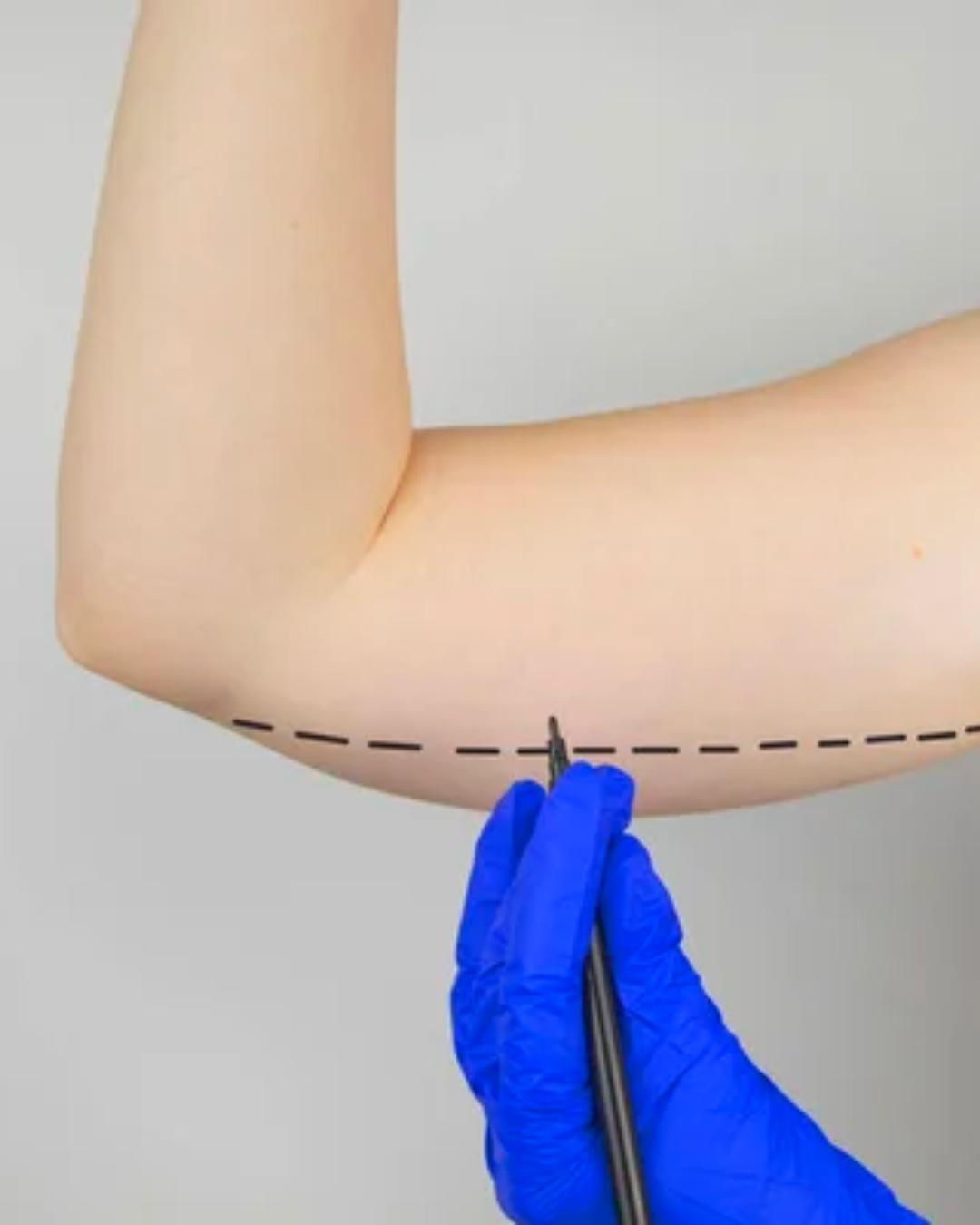Losing a significant amount of weight is an amazing accomplishment, but it can often leave you with a new challenge: loose skin. This is completely normal! When you lose weight, your skin has to adapt to a smaller body size. Unfortunately, depending on how much weight you’ve lost and your skin’s elasticity, it may not always bounce back perfectly.
So, the question remains: how to tighten loose skin?
In this comprehensive guide, we’ll show you effective ways to tone and tighten loose skin after weight loss, so you can feel confident and comfortable in your new body. From incorporating specific exercises that target the problem areas, to following a healthy diet rich in collagen-boosting foods, we’ll provide you with practical tips that have been proven to tighten loose skin. We will also explore other options such as therapy treatments and skin care products specifically designed to promote skin tightening. Don’t let loose skin hinder your weight loss success.
Table of Contents
Understanding What Causes Loose Skin After Weight Loss
Losing a significant amount of weight is a major accomplishment, but the resulting loose skin can be disheartening. To effectively tighten loose skin, it’s essential to understand why it occurs. When you gain weight, your skin stretches to accommodate the increased volume. However, the skin’s elasticity may not fully recover after weight loss, leading to sagging and loose skin. Factors such as age, genetics, and how long you were overweight can also influence the severity of loose skin. While it may not be possible to completely eliminate loose skin, there are several techniques that can help tighten it and improve its appearance.
One important factor to consider is the rate at which you lose weight. Rapid weight loss can contribute to more pronounced loose skin. Gradual weight loss allows your skin to adjust gradually, giving it a better chance of tightening naturally. It’s recommended to aim for a weight loss of 1-2 pounds per week, as this steady pace gives your skin time to adapt. Additionally, building muscle can play a significant role in tightening loose skin.
How Much Weight Loss Will Cause Loose Skin?

The occurrence of loose skin following weight loss can depend on several factors, making it challenging to pinpoint a specific amount of weight loss that will result in loose skin for every individual.
1. Amount of Weight Lost: Generally, the more significant the weight loss, the more likely an individual is to experience loose skin. This is particularly true for those who lose 100 pounds (45 kilograms) or more. The skin stretches to accommodate excess body fat as weight is gained, and after substantial weight loss, the skin may not completely retract to its former size and shape.
2. Speed of Weight Loss: Rapid weight loss is more likely to result in loose skin because the skin doesn’t have enough time to adjust gradually to the body’s new size.
3. Age and Skin Elasticity: Skin elasticity decreases with age, so older individuals may experience more loose skin after weight loss compared to younger people.
4. Genetics: Individual genetic factors play a significant role in determining skin elasticity. Some people may be more genetically predisposed to having resilient skin that can retract more effectively after weight loss.
5. Lifestyle Factors: Smoking, sun exposure, and poor nutrition can all negatively affect skin elasticity, making it more difficult for the skin to tighten after weight loss.
6. How Long the Weight Was Carried: People who have been overweight or obese for a significant period, especially from a young age, may have stretched their skin for an extended duration, making it harder for the skin to snap back after weight loss.
Proven Strategies On How To Tighten Loose Skin After Weight Loss
While patience and acceptance of your body’s changes are key, there are proactive steps you can take to address loose skin. Here’s a breakdown of options, ranging from natural approaches to more advanced treatments:
Home-Based Solutions: Simple Yet Effective
- Hydration is Key: Ample water intake keeps skin cells plump and supports elasticity.
- Nutrient-Rich Diet: Focus on protein (for collagen production), vitamin C, omega-3 fatty acids, and other skin-healthy nutrients.
- Topical Skincare: While not a miracle cure, creams with ingredients like retinol and hyaluronic acid may offer modest improvements in skin texture.
- Regular Exercise: Strength training builds muscle, which helps fill out loose skin and improve overall body contour.
- Gradual Weight Loss: Losing weight very rapidly increases the likelihood of loose skin. Aim for a gradual, sustainable pace if possible.
Professional Interventions: Deeper Impact
- Firming Creams & Massage: Talk to a dermatologist about prescription-strength creams and the potential benefits of massage for boosting circulation.
- Non-surgical Procedures: Technologies like radiofrequency, ultrasound, and laser treatments may stimulate collagen production and offer moderate tightening effects.
- Body Contouring Surgery: For cases of significant excess skin, surgical options like tummy tucks and arm lifts offer more dramatic results.
The best method for you depends on the severity of loose skin, your individual circumstances, and your budget. Consult a dermatologist or a plastic surgeon to get professional advice and create a customized plan that’s both safe and effective.
Non-Surgical Procedures To Get Rid Of Loose Skin After Weight Loss
Non-surgical skin tightening procedures have become increasingly popular for improving the appearance of loose skin after significant weight loss, offering less invasive alternatives to surgical options. These treatments can enhance skin tightness and elasticity by stimulating the body’s natural processes for producing collagen and elastin, the proteins responsible for the skin’s firmness and elasticity. Here’s an overview of some effective non-surgical procedures:
Radiofrequency (RF) Therapy
RF therapy is a non-invasive, relatively painless procedure with minimal downtime, making it a convenient option for many. It uses energy waves to heat the deep layer of your skin known as the dermis. This heat stimulates collagen production, which in turn can lead to tighter, smoother skin. Commonly used on the face, neck, and body, RF therapy can improve skin tone and elasticity in various areas.
Ultrasound Skin Tightening
This procedure, often known by the brand name Ultherapy, uses micro-focused ultrasound energy to target the layers of skin just below the surface. The ultrasound energy stimulates collagen and elastin production without harming the top layer of skin. It’s particularly effective for lifting and tightening the skin on the neck, chin, and brow, as well as improving lines and wrinkles on the upper chest.
Ultrasound skin tightening can reach deeper skin layers compared to other non-invasive treatments, potentially leading to more significant improvements in skin firmness.
Laser Therapy
Laser treatments involve using focused light to heat the outer and deeper layers of skin, encouraging new collagen and elastin growth. Fractional lasers treat specific skin areas without affecting the surrounding skin, promoting faster healing. Effective for the face, neck, arms, and stomach, laser therapy can address both skin texture and tightness.
Laser therapy can reduce the appearance of fine lines, wrinkles, and minor skin imperfections, in addition to tightening loose skin.
Microneedling with Radiofrequency (RF Microneedling)
This technique combines microneedling, which involves creating tiny punctures in the skin, with radiofrequency energy. The RF energy is delivered through the needles, enhancing the collagen-stimulating effects of traditional microneedling.
RF microneedling is versatile and can be used on the face, neck, and body to improve skin texture, firmness, and elasticity. The combination of microneedling and RF energy can offer more significant skin tightening and rejuvenation effects, with relatively short recovery times.
Chemical Peels
Chemical peels involve applying a chemical solution to the skin, which exfoliates the top layers and stimulates new skin growth. This new skin is usually smoother, with improved texture and firmness.
Primarily used on the face, chemical peels can also treat skin on the neck and hands. Besides tightening, chemical peels can improve the appearance of age spots, freckles, and mild scarring.
Surgical Options For Tightening Loose Skin After Weight Loss
After significant weight loss, surgical procedures are often considered the most effective method for tightening loose skin and improving body contours. These surgeries are particularly beneficial for individuals with substantial amounts of excess skin that cannot be adequately addressed with non-surgical treatments.
Here are some of the common surgical procedures designed to remove loose skin and reshape areas of the body:
Abdominoplasty (Tummy Tuck): This procedure involves the removal of excess skin and fat from the abdominal area and the restoration of weakened or separated muscles to create a smoother and firmer abdominal profile.
Body Lift: A body lift may include the abdominal area, buttocks, groin, and thighs. The procedure involves removing excess skin and fat and tightening the remaining skin to improve the shape and tone of the underlying tissue.
Brachioplasty (Arm Lift): This procedure is designed to remove excess skin and fat from the upper arms, creating a more toned and proportionate appearance.
Thigh Lift: A thigh lift targets excess skin and fat on the upper thighs. The procedure aims to create a more toned and proportionate thigh appearance.
Mastopexy (Breast Lift): This procedure lifts and reshapes sagging breasts by removing excess skin and tightening the surrounding tissue to support a new breast contour.
Facelift (Rhytidectomy): A facelift addresses sagging skin on the face and neck, tightening the skin and underlying muscles to create a more youthful and refreshed appearance.

Take The First Step And Reclaim Your Confidence
Discover our specialized solutions for tightening loose skin at Orion Health & Wellness Services. Our tailored treatments are designed to sculpt and tighten, ensuring that your transformation is truly complete.
Say goodbye to the remnants of your past self and hello to a rejuvenated, confident you.
Learn MoreBuilding Muscle To Tighten Loose Skin

Strength training plays a crucial role in improving muscle tone and firmness, which can significantly impact the appearance of loose skin after weight loss. When skin becomes loose following significant weight reduction, it’s often because the volume of fat that previously stretched the skin has decreased. Building muscle through strength training can partially offset this loss of volume by adding muscle mass beneath the skin, which can help to “fill out” and tighten the skin’s appearance. Here’s how strength training and specific types of exercise contribute to this process:
1. Muscle Building and Skin Tightening
Strength training exercises lead to muscle hypertrophy, which is the enlargement of muscle fibers in response to overcoming force from weights or resistance. This increase in muscle mass can help reduce the saggy appearance of the skin by providing a firmer, more toned structure beneath it.
As muscles become more defined and voluminous, they can push out against the skin, reducing the laxity and loose appearance. This doesn’t remove the loose skin but can make it less noticeable by improving the overall body contour.
2. Types of Strength Training Exercises
Exercises like squats, deadlifts, bench presses, and rows work multiple muscle groups at once, leading to more significant hormonal responses and muscle gains, which can contribute to an overall tighter appearance. Focusing on specific muscles, such as bicep curls or tricep extensions, can help target areas that might enhance the appearance under looser skin areas, like the upper arms. Movements like push-ups, pull-ups, and planks are effective for building muscle and can be easily modified for different fitness levels.
3. Consistency and Progression
Regular engagement in strength training, typically recommended as 2-3 times per week for each muscle group, is crucial for sustained muscle growth and skin tightening effects. Gradually increasing the weight, frequency, or volume of exercises ensures continuous muscle growth. This principle keeps challenging the muscles, promoting further gains in muscle mass and definition.
4. Complementary Cardiovascular Exercise
While strength training is key for building muscle, incorporating some cardiovascular exercise can help reduce overall body fat percentage, making the newly toned muscles more visible. Activities like running, cycling, or swimming can complement strength training by enhancing fat loss and improving cardiovascular health, without compromising muscle growth if balanced properly.
5. Nutrition and Hydration
Adequate protein intake is essential for muscle repair and growth. Ensuring a diet rich in protein, alongside a balance of carbohydrates and fats, supports the body’s recovery and muscle-building processes after strength training sessions. Staying well-hydrated is important for overall skin health and can improve its appearance. While hydration alone won’t tighten loose skin, it can help the skin look more vibrant and healthy.
Nutritional Support For Skin Elasticity
A nutrient-rich diet plays a pivotal role in enhancing skin elasticity and overall health, which can contribute to the appearance of tighter, more resilient skin, especially after significant weight loss. Essential vitamins, minerals, and other nutrients help maintain the skin’s structural integrity, promote collagen production, and protect against cellular damage. Here’s a look at key nutrients that support skin health and may aid in tightening loose skin:
- Vitamin C: Vitamin C is crucial for collagen synthesis, the protein that gives skin its strength and elasticity. It also acts as a powerful antioxidant, protecting the skin from damage caused by free radicals and sun exposure. Include citrus fruits, strawberries, bell peppers, and dark leafy greens in your diet to boost vitamin C intake.
- Vitamin E: Vitamin E is another potent antioxidant that helps protect skin cells from oxidative damage. It supports skin health by maintaining moisture and repairing damaged skin. Nuts, seeds, spinach, and avocados are excellent sources of vitamin E.
- Zinc: Zinc plays a role in the production of new cells and the removal of dead ones, helping to maintain the skin’s integrity and speed up the healing process. It also supports collagen synthesis and has anti-inflammatory properties. Foods rich in zinc include meats, fish, dairy products, nuts, seeds, and whole grains.
- Omega-3 Fatty Acids: Omega-3s are essential fats that help maintain the skin’s lipid barrier, crucial for keeping the skin hydrated and plump. They also possess anti-inflammatory properties that can help reduce redness and swelling. Fatty fish like salmon, mackerel, and sardines, as well as flaxseeds, chia seeds, and walnuts, are high in omega-3 fatty acids.
- Selenium: Selenium is an antioxidant that helps protect the skin from UV-induced damage and supports skin elasticity and health. Brazil nuts, seafood, and whole grains are good sources of selenium.
- Protein: Adequate protein intake is essential for collagen and elastin production, both of which are vital for maintaining skin elasticity and structure. Lean meats, dairy products, legumes, and plant-based proteins like tofu and tempeh can help meet your protein needs.
- Vitamin A: Vitamin A is important for skin regeneration and repair, and it helps support skin elasticity by promoting the production of new skin cells. Sweet potatoes, carrots, and dark leafy greens are rich in beta-carotene, a precursor to vitamin A.
The Impact Of Hydration On Skin Health
Another way to help tighten loose skin is nourishing your skin from within. And this can be done by maintaining a healthy diet on top of staying hydrated.
Skin cells, like all cells in your body, rely heavily on water. Proper hydration keeps skin cells plump and firm. Dehydrated skin can become shriveled and less supple, worsening the appearance of loose skin. Drinking plenty of water helps flush out toxins from your system. This supports healthy skin function and may reduce inflammation and puffiness that can exaggerate the appearance of loose skin.
Aim for at least 8 glasses of water a day, and more during exercise or hot weather. Include hydrating fruits and vegetables in your diet such as watermelon, berries, and cucumbers.
While hydration is vital for overall skin health, it won’t magically erase loose skin after significant weight loss. However, it’s a crucial component of your body’s ability to look its best and is an essential part of a holistic approach to tightening and toning.
The Psychological Effects Of Loose Skin And Coping Strategies

There is no doubt that beyond the physical changes, loose skin after weight loss can take an emotional toll. You’ve worked incredibly hard to achieve a healthier body, and it’s perfectly normal to feel frustrated, discouraged, or even a little betrayed when confronted with this new challenge.
But remember, your body has undergone a remarkable transformation. Honor the hard work you’ve put in and be patient as you continue to adapt. Don’t let loose skin overshadow your incredible achievement. Celebrate all the positive changes you’ve experienced – the improved health, increased energy, and the strength you’ve gained.
If struggles with body image significantly impact your mental well-being, consider seeking support from a therapist who specializes in body image issues.
Long-Term Maintenance And Skin Care
Here are a few tips on keeping your skin looking and feeling its best to minimize loose skin over time:
- Moisturize: Hydrated skin is supple and resilient. Use a moisturizer suited for your skin type morning and night.
- Targeted Treatments: Talk to a dermatologist about topical products like retinol or hyaluronic acid, which may improve skin texture with regular use.
- Consistency is Key: Aim for at least 150 minutes of moderate-intensity exercise or 75 minutes of vigorous exercise per week.
- Focus on Antioxidants: Colorful fruits and vegetables are packed with antioxidants, which fight cell damage caused by free radicals.
- Stay Hydrated: Aim to drink plenty of water throughout the day to maintain skin hydration and support overall health.
- Limit Processed Foods: High in sugar, processed foods can trigger inflammation and worsen skin appearance.
- Get Good Sleep: Your body repairs itself during rest, including your skin.
- Manage Stress: Chronic stress can raise cortisol levels, which negatively impacts skin health. Find healthy coping mechanisms.
- Smoking Cessation: Smoking wreaks havoc on skin elasticity, so quitting is crucial for prevention and improvement.
Ready To Reveal The Best Version Of Yourself After Your Weight Woss Journey?
Seize the opportunity and take the first step to start your journey towards a healthier and more confident you with Orion Health & Wellness Services.
Our personalized approach to weight management not only helps you shed those extra pounds but also focuses on tightening loose skin for a firmer, more sculpted appearance.
Contact us today!
Book ConsultationWrapping Up
Tightening loose skin after weight loss may require a combination of strategies and patience. Gradual weight loss, building muscle through strength training, and following a nutritious diet can all contribute to skin tightening. Additionally, staying hydrated and incorporating collagen-boosting foods into your diet can support skin elasticity. For those seeking more immediate results, non-surgical options such as radiofrequency therapy and laser treatments can be considered. Remember, everyone’s body is unique, and results may vary.
Embrace the progress you’ve made on your weight loss journey and celebrate your transformed body, regardless of any remaining loose skin. With the right approach and mindset, you can confidently rock your new body and feel proud of your accomplishments.
If you need professional advice and guidance, reach out to one of our medical experts at Orion Health & Wellness Services.
Frequently Asked Questions
Loose skin occurs after weight loss because the skin has been stretched for a prolonged period of time due to excess weight. When the weight is lost, the skin may not be able to regain its elasticity, resulting in loose and sagging skin.
No, surgery is not the only option to remove loose skin after weight loss. While surgical procedures like a tummy tuck or body lift can provide significant results, there are non-surgical alternatives as mentioned earlier that can also help in tightening loose skin.
Yes, there are non-surgical treatments available for tightening loose skin. These include radiofrequency therapy, laser treatments, and ultrasound therapy, which stimulate collagen production and tighten the skin. It is recommended to consult a dermatologist or plastic surgeon to determine the most suitable treatment option.
In some cases, the loose skin may gradually tighten on its own over time. The skin has some level of natural elasticity that allows it to adapt to changes in the body. However, the extent of tightening varies from person to person and is influenced by factors such as age, genetics, and the amount of weight loss.
The time it takes for loose skin to tighten after weight loss varies for each individual. It can take several months to a couple of years for the skin to tighten to some extent. It is important to have realistic expectations and understand that complete tightening may not always be possible.
